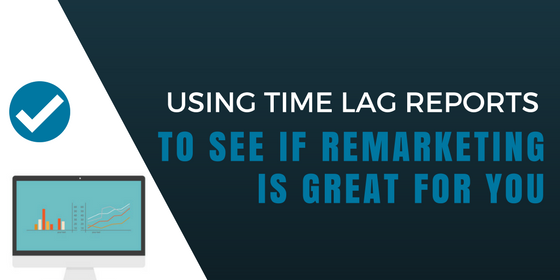Remarketing is a process whereby visitors will see an advertisement on a third-party site for an item they were recently shopping for. This is facilitated by tagging visitors with a specific code or cookie. We know that 97% of users do not convert on their first visit to a website, so remarketing is an effective way to establish brand recall with individuals who have already shown an interest in your business and products. Benefits of using remarketing include:
- The ability to reach leads when they’re ready to purchase
- Displaying extremely relevant ads for products or services they’re interested in
- Increased conversion rates
When remarketing was first introduced around 2010, people used to be blown away by the concept. “How do they know I was JUST looking at that product?!” But as it became clear how effective it is in driving conversions, more marketers jumped on the remarketing bandwagon.
You might think remarketing is really only effective for consumer product, eCommerce type businesses, but it’s actually beneficial for many different businesses and industries.
Is your business one of those that can really benefit from remarketing campaigns? Use the Time Lag report in Google Analytics to find out.
What is the Time Lag Report?
The Time Lag report within Google Analytics can tell you how effective remarketing will be for your business and help you create an effective strategy. You can find it under Conversions > Multi-Channel Funnels.

The Time Lag report will tell you how many days it took a user to convert after their first visit. To make sure you’re producing actionable data, be sure your window is set to at least the last 90 days.
Why is the Time Lag Report Effective for Remarketing?
The Time Lag report will help your business see patterns in the amount of time it takes a user to convert. This will help you determine:
- The duration you should set for your remarketing campaign
- How much budget to allocate during certain periods of your campaign
- Specific audiences to create based on where they’re at in their buyer’s journey (more suitable for businesses with particularly long time lags)
- Which points in your campaign you should modify the offer
Modifying the offer in your ads can be an effective tactic to implement towards the end of your campaign, when you know most buyers typically convert. For example: If your Time Lag report shows that the majority of your customers convert after 10 days, show users a discount code on the 10th day if they haven’t converted. However, when using this approach it’s critical to exclude customers that already converted from your audience so that they don’t see a discount right after they paid full price.
The Remarketing Opportunity Scale
Almost all businesses can benefit from remarketing but some can really benefit from these types of ads. Unless your business is one that results in immediate conversions (like a tow truck, or locksmith), use the chart below to determine your business’ level of remarketing opportunity.
First, look to the left column to determine how common repeat sales are for your business. Next, take your repeat business revenue percentage and divide it by the average time lag you identified in Google Analytics. The percentages and time lags in the chart below are merely examples. Each business’ revenue percentage and time lag will differ from the next. Use these values as a gauge to benchmark against your own ratio between revenue % and time lag.

So where did you rank on the remarketing opportunity scale? The best way to determine how effective remarketing can be for your business is to test it out. But it’s important to be strategic about creating and executing your campaigns to determine what’s working and what’s not. The average American is exposed to 4,000-10,000 advertisements everyday. So in order to ensure your remarketing ads break through the clutter, seek the advice of a remarketing specialist before diving in!







